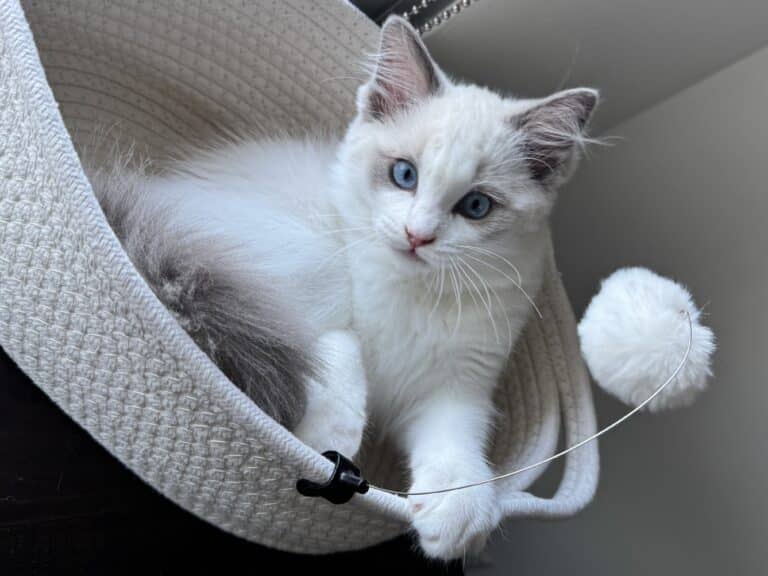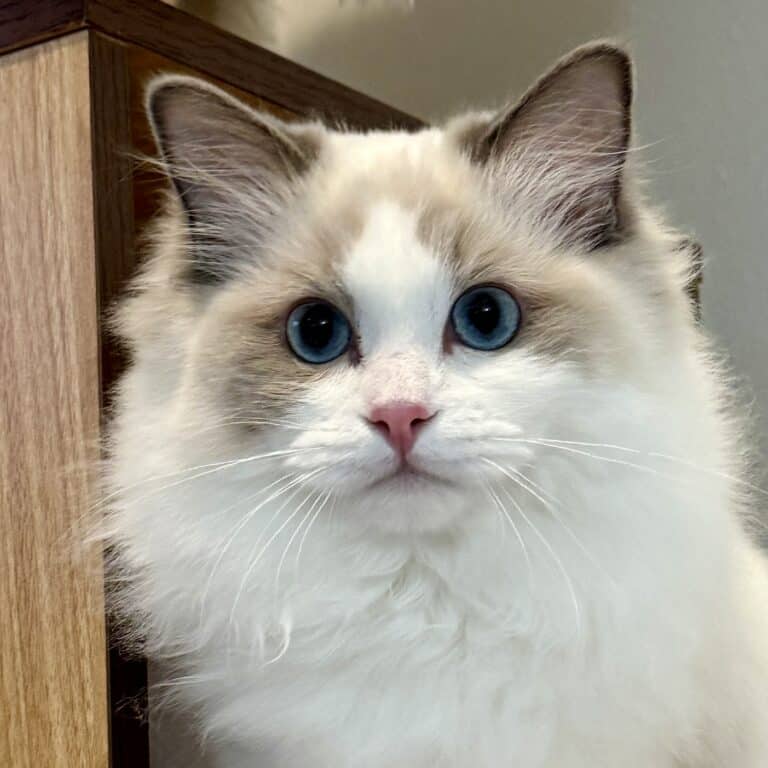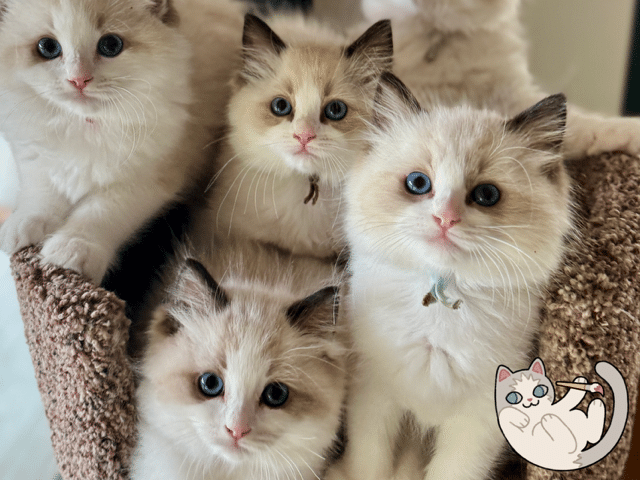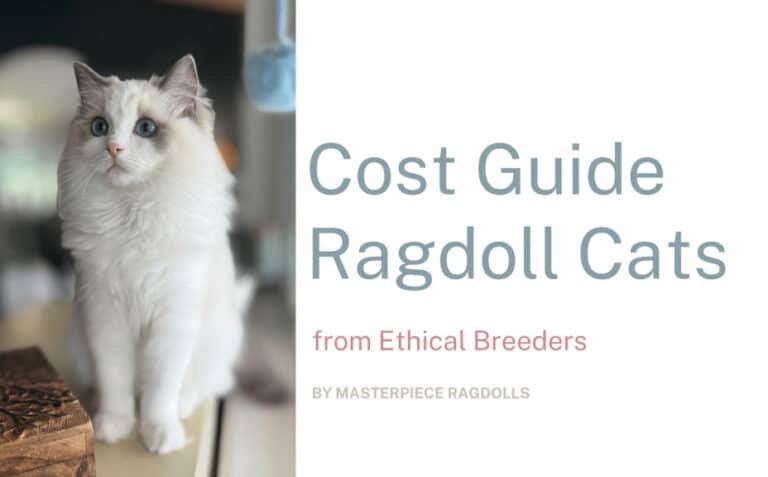It’s fall, y’all!. Time for the typical seasonal stuff: pumpkin spice lattes, pumpkin patch trips, and pumpkin carving. But I want to talk about another “P” — Ragdoll poop — and how it relates to pumpkin, surprisingly.
Pet stores sell pumpkin supplements for a good reason. Pumpkin has fiber that helps keep things moving smoothly. If your Ragdoll cat recently ate something new and has an upset stomach for any reason, giving them pumpkin with the right probiotic can help restore their stomach’s good bacteria and aid digestion.
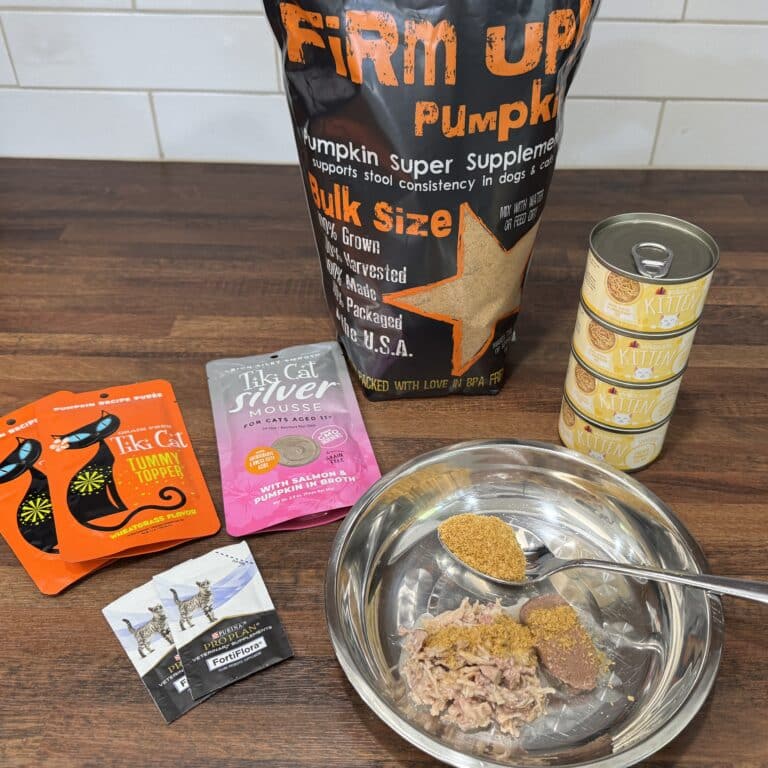
Without grossing you out, let’s address the elephant in the room – the thing none of us really want to elaborate on, but we must because litter box business is part of Ragdoll cat ownership. In fact, it is the number one follow-up subject I receive from my adopters.
Problem Areas: Too runny, too infrequent, too smelly, too obviously still attached (the dingleberry).
I kid you not, the dingleberry just snuck up on me while I was writing this very blog. And yes, I stopped writing to take a picture, because I want you to know you’re not alone. I’m right here with you.
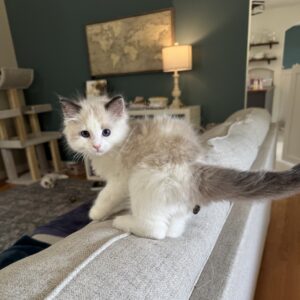
FAQ: Ragdoll Cat Poop
Why doesn’t my Ragdoll cover his poops? Honestly, I have no idea. Behaviorists suggest that it’s related to dominant behavior, but this doesn’t always make sense, particularly if there are no other cats in the house. If the box is too small, maybe?
Why does my Ragdoll poop next to the litter box? This is called litter box avoidance. Something is not quite right in the environment, i.e. the box is too small, or it already contains too many deposits, or your cat is unhappy and about something & you’ll need to figure it out. Don’t make too many changes such as litter type or box placement. Put on your detective glasses and study your cat’s behavior.
How can I keep my cat clean “back there”? Sanitary shaves, consistent diet, and plenty of fiber.
How often should they “go”? Daily at least if fed cooked or kibble. If fed raw, every other day is not uncommon.
Should Ragdoll poop look like this? Check out the chart below. Numbers 3 and 4 are what we are aiming for.

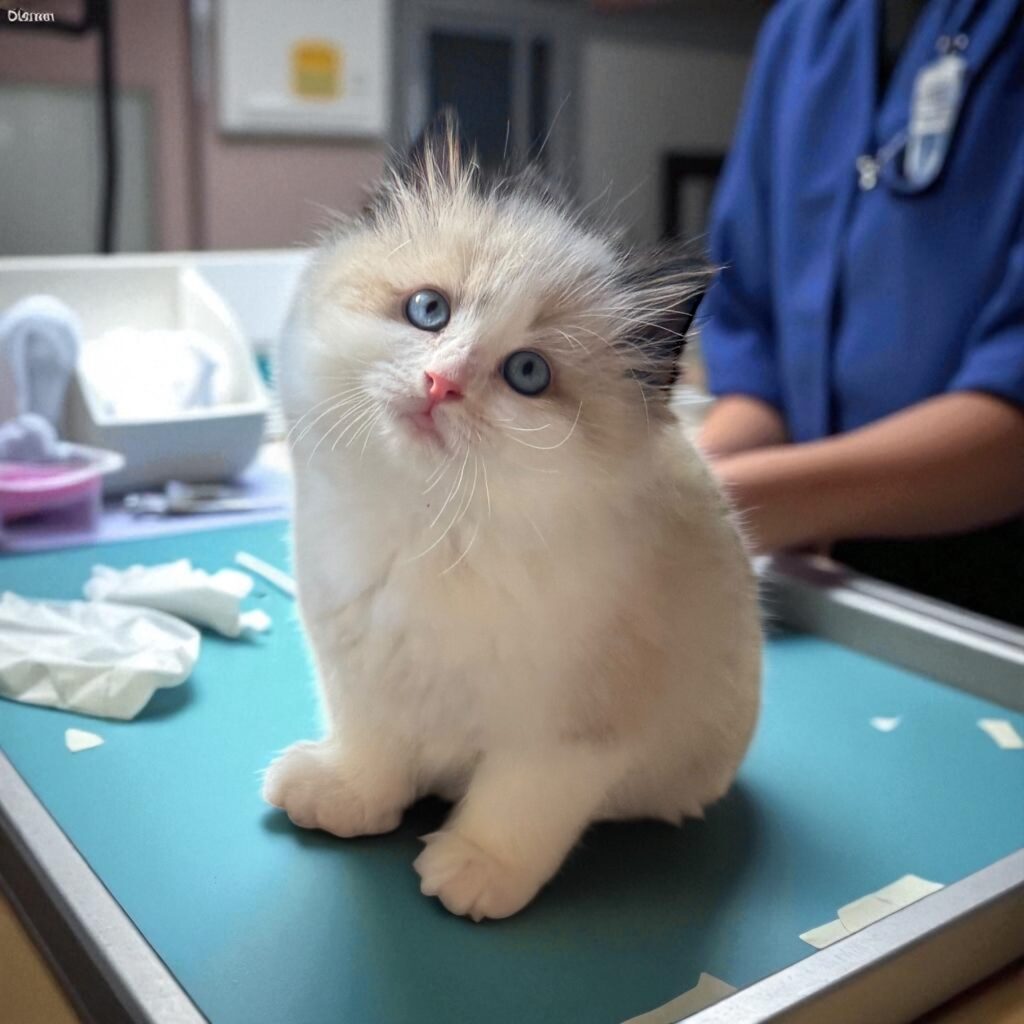
How to Keep Your Ragdoll
Cat’s Bowels Healthy:
I’m not a vet, but I can tell you when to worry and when it’s just a matter of adjusting their diet. I’ll also explain what tests your vet might do if you decide it is time for your raggie to see one.
Here’s a simple guide to understanding your Ragdoll’s poop:
A good poop for a cat is firm, dark brown, shaped like a sausage, and they pass it once or twice a day without straining. If it looks different — maybe lighter, smelly, or unusual in texture or how often they normally go — it could mean something’s up. Watching what your cat leaves in the litter box helps you keep tabs on their digestive health.
Five key elements of healthy Ragdoll poop:
1. How Often (Frequency)
Most adult Ragdolls go once or twice a day. Kittens often go 2–3 times daily. Older cats might go a little less because their digestion slows down. If your cat hasn’t gone in over two days, they might be constipated.
Note: Every cat is different, and what’s normal depends on their diet. For example, cats eating home-cooked or raw meat tend to go less often than those eating dry kibble, which produces more waste and odor.
2. How It Looks (Consistency)
The best stool is firm and slightly moist, shaped like a log, and easy to scoop.
Hard, dry poop might mean constipation. Very soft or watery stool could be diarrhea. Remember: Frequent, runny diarrhea is especially a concern.
3. Color
Healthy Ragdoll poop is usually a solid dark brown. Changes can be caused by diet, but if it stays unusual, see a vet. Be alert for:
Black or tar-like stool — can mean bleeding in the stomach.
Red streaks — may be blood from lower parts of the digestive system. Usually not serious if just streaked, but it’s best to check.
Yellow, green, or light-colored stool — might indicate digestive or liver issues. Sometimes caused by infection, which a vet can treat with medication.
4. Smell
Some odor is normal, but it shouldn’t be overpowering or foul. If it smells really bad, it could mean infection, parasites, bleeding, or an upset gut.
5. Inside the Ragdoll Poop
Normal stool should look plain. Check for:
Excess hair — from over-grooming.
Worms or rice-like grains — parasites.
Foreign objects — strings or small toys that could block her gut.
Mucus or jelly — signs of colon inflammation.
What can I do to ensure my Ragdoll Cat Stays Regular?
Make sure your cat always has fresh water; a water fountain can encourage drinking.
Feed high-quality, balanced food suited to their age, with proper protein, fats, fiber, and nutrients.
When changing food, do it gradually over a week to prevent stomach upset.
Play and exercise daily to help digestion.
Keep the litter box clean and in a quiet, low-stress spot. Cats avoid dirty boxes and may skip going or go outside the box if they’re uncomfortable.
What if the Ragdoll Poop Is Runny?
Sometimes, constipation or blockage can cause loose stools. If it lasts more than a day or two, see a vet.
At your visit to the vet, you can expect:
The vet will feel your cat’s belly to check for any blockage.
A sample of the stool can be tested for parasites. This is called a “fecal sample” or “fecal test.”
X-rays might be needed if a blockage is suspected during the office examination.
A special PCR test can detect infections or bacteria if initial fecal tests are negative.
Vets may also give antibiotics or parasite medicines while waiting for results — common culprits are E. coli, or parasites like coccidia and giardia, but only testing can give a more definitive answer.
What if there is no Ragdoll Poop?
If your cat’s diet is raw, they may poop less often.
But if they suddenly stop making solid poops and aren’t going at all, it’s time to see the vet. If she’s also vomiting and not going, get immediate help — this could mean a bowel blockage or a telescopic colon, which sometimes requires surgery. It’s rare but serious, so don’t delay.
Bottom Line:



